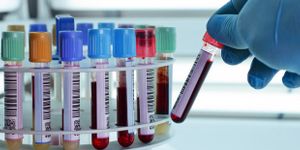How Does It Taste? Want Some Salt (and Microplastics)?
Looks can be very deceiving: pristine, pure-like grains of sea salt can be the perfect trojan horse for the invasion of the omnipresent environmental villain of our time: plastics, more specifically microplastics.
In a recent study published in the journal Scientific Reports, a group of Malaysian researchers looked at particles of the size around 100 microns in various brands of sea salt. Using a technique called micro-Raman spectroscopy, they identified over 41% of the particles are plastic polymers, and among them, 40% are polypropylene, and 33% are polyethylene.
Also according to the report, 1 to 10 microplastic was found in every kilogram of salt except for one brand. Doesn't seem like much? Even though the concentration of microplastics in salt is not high enough to cause health-related concern yet, the trend is disturbing. If the rate of plastics waste entering the eco-system sustains, and the degradation of plastics in the ocean continue (which is for sure), it will soon come to a tipping point when the microplastics in salt, or food source as a whole, reach harmful levels.
Source: Seeker via Youtube








